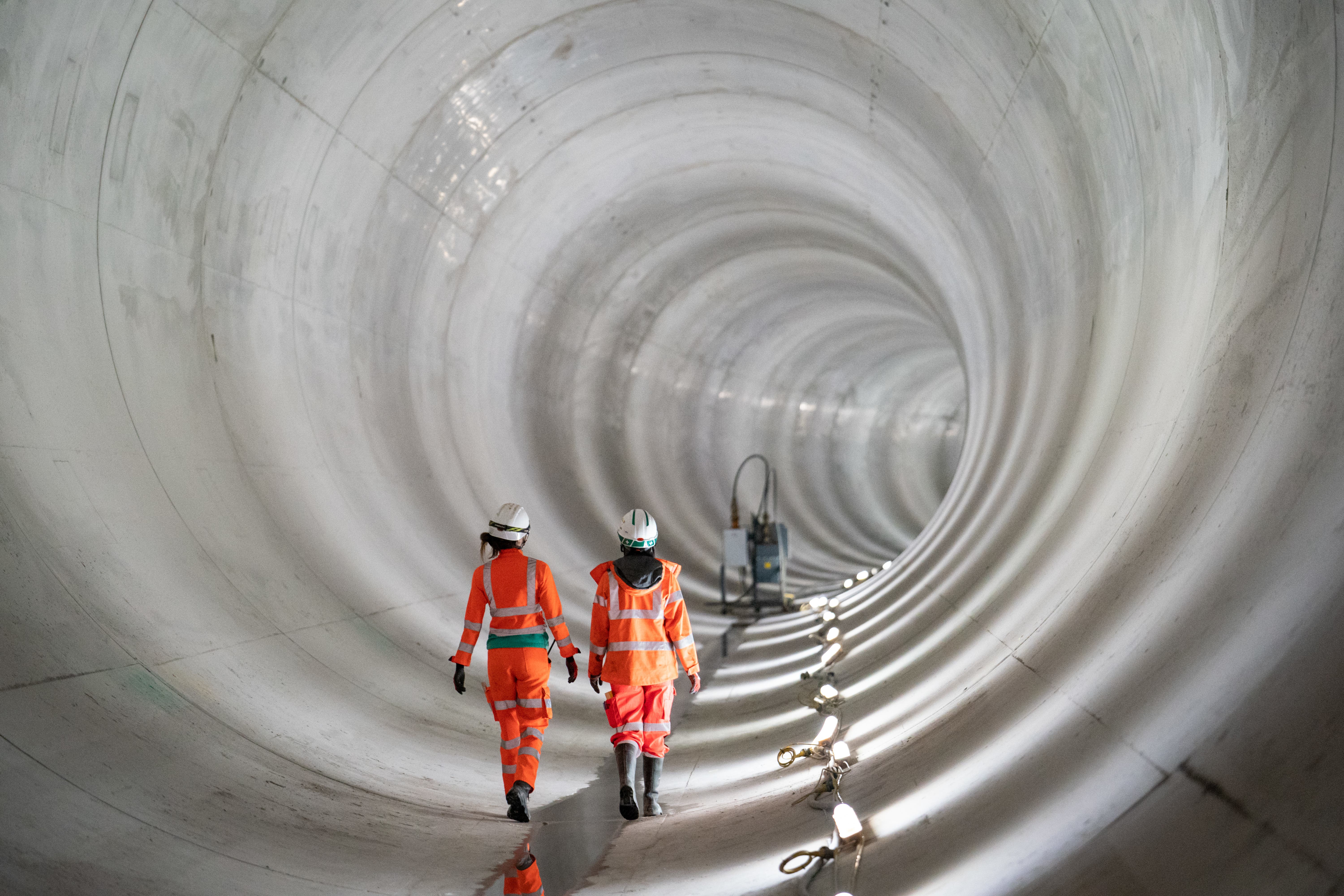Gates open on London’s new super sewer aimed at protecting Thames from pollution
The first valves at four of a total of 21 sites, which operate like giant gates, have opened along the seven metre-wide tunnel.

Your support helps us to tell the story
From reproductive rights to climate change to Big Tech, The Independent is on the ground when the story is developing. Whether it's investigating the financials of Elon Musk's pro-Trump PAC or producing our latest documentary, 'The A Word', which shines a light on the American women fighting for reproductive rights, we know how important it is to parse out the facts from the messaging.
At such a critical moment in US history, we need reporters on the ground. Your donation allows us to keep sending journalists to speak to both sides of the story.
The Independent is trusted by Americans across the entire political spectrum. And unlike many other quality news outlets, we choose not to lock Americans out of our reporting and analysis with paywalls. We believe quality journalism should be available to everyone, paid for by those who can afford it.
Your support makes all the difference.London’s new super sewer, designed to protect the River Thames from sewage pollution well into the future, has opened for the first time.
The first valves at four of a total of 21 sites, which operate like giant gates, along the seven metre-wide tunnel have opened.
Teams are continuing work to get the whole system running with the rest due to come online in the coming months, when the sewer will reach full operating capacity.
Data published on Monday shows that in one 24-hour period, when London saw heavy rainfall on September 23, almost 600,000 metres squared of sewage was captured by the London Tideway Tunnel with the first four connections activated.
The super sewer, which is 25km long, was connected to the 6.7km Lee Tunnel in May, completing the full London Tideway Tunnel network.
The system will intercept, store and ultimately transfer sewage waste away from the River Thames with a combined capacity of 1.6 million metres squared.
Andy Mitchell, chief executive of Tideway, said: “This is an important moment for the Thames.
“The super sewer has been switched on and is starting to protect the river from sewage pollution.”
Tideway is distinct from, but funded by, Thames Water, with its 16 million customers paying through their bills for the giant sewage pipe running underground along the bank of the river.
“These are early days, with more connections to make and further testing to come, but the super sewer’s positive influence on the health of the Thames will increase over the coming months – and London will soon be home to the cleaner, healthier river it deserves,” Mr Mitchell said.
Teams will work to connect the remaining discharge points to the new super sewer and test the entire system during different weather conditions, including heavy storms, Tideway said.
The firm said that while the testing phase is now under way, work also continues above ground to finish the new riverside public spaces being created as part of the project.
The project has taken 20,000 people eight years to build, costing £4.5 billion, and is one of the largest engineering projects the capital has seen in recent years, stretching 25km from Acton to Beckton.
More than 20 deep shafts – some as wide as the dome of St Paul’s Cathedral – have been constructed across London to divert sewage flows and to lower tunnelling machines into the ground.
Once fully operational, Tideway said the super sewer will almost eliminate the harmful effects of sewage pollution in the Thames through central London.
Thames Water will then operate the system, as part of its London wastewater network.
Chris Weston, Thames Water chief executive, said: “This is a very exciting moment for us all as we see the third and final phase of the huge scheme to help prevent sewage pollution entering the River Thames.
“We recognise no single body has the ability to achieve this vision alone and are keen to continue our work with partners to meet expectations of the community and the environment.”
Chris Coode, chief executive of river charity Thames21, said: “This critical infrastructure will play a significant role in protecting the tidal Thames from the damage caused by sewage pollution, a step towards improving the health of the river in central London.”
Water minister Emma Hardy said: “The Thames has defined the capital and the nation, but like so many of our waterways it has been degraded by unacceptable levels of pollution.
“The Thames Tideway Tunnel is an example of the transformation and investment we want to see up and down the country to clean up our rivers, lakes and seas.”
Alan Lovell, Environment Agency chairman, said: “We are proud to have worked collaboratively with partners on the Tideway project reducing storm sewage spills into the tidal Thames by around 95%.
“We are regulating the system with environmental permits and will continue to monitor water quality and aquatic life in our capital’s river.”